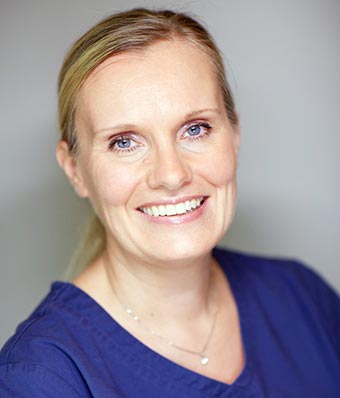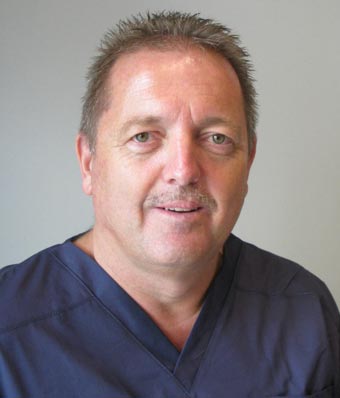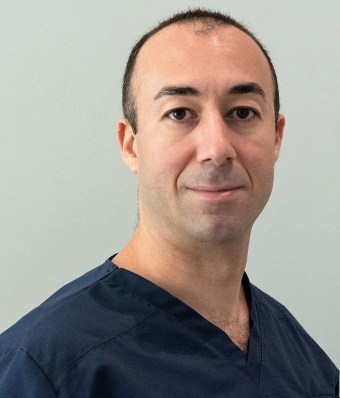3D-Guided Implant Surgery in Dubai Unparalleled Precision For an Impeccable Smile
Experience excellence in dental care with state-of-the-art 3D-guided Implant Surgery in Dubai, where precision and innovation meet.
Book Your Appointment
You can use the form below and we will get back to you as soon as possible.
Dental Implants Made Safer & More Accurate With Advanced Computer-guided Surgery
When it comes to getting dental implants, the idea of having an artificial tooth inserted into the jawbone may sound worrisome for many. Nowadays, undergoing dental treatment, such as a dental crown in Dubai, has become safer and more convenient than ever before due to massive improvements over the years.
What’s even better is that with today’s technological advancements, dental implants are now inserted with absolute precision using 3D-guided implant surgery in Dubai.
This advanced dental implant treatment is a more sophisticated surgical procedure than traditional implants. It deploys 3D imaging techniques and advanced 3D printing technology to create a detailed guide for the operation.
Additionally, the dental implant procedure minimizes the margin of error and ensures accurate placement while reducing surgery time and recovery period, resulting in adequate and predictable long-term outcomes.
What Is 3D-Guided Implant Insertion?
3D-guided dental implant surgery is essentially a collaboration between dentistry and the latest technological advancements in 3D printing and imaging. It involves performing a 3D cone-beam computed tomography (CBCT) scan of the patient’s jaw to create a detailed, custom-made surgical guide specifically to the patient’s case.
3D-Guided Surgery vs. Traditional Implant Surgery
A traditional dental implant in Dubai involves the placement of dental implants into the jawbone using a manual drill and X-ray imaging. Although this surgical procedure has been present for many years and is reliable with the right dentist, it still has drawbacks, as the X-rays don’t provide an accurate enough view of the bone.
For dental implant placement, dentists must have excellent precision because if the implant doesn’t sit in the correct apex position, there’s a chance it doesn’t fuse with the bone and may need to be removed.
In recent years, 3D-guided implant surgery has become one of the most popular dental treatments in Dubai compared to traditional implant surgery, as it utilizes advanced 3D imaging equipment to create a detailed 3D map of the patient’s jawbone.
The model created from the 3D cone-beam computed tomography (CBCT) scan allows the surgeon to plan the ideal position of the implant with better precision and a higher success rate.
However, the main reason why guided implants, along with dental bridges in Dubai, are such a revolutionary dentistry practice is because they minimize the risk of damage that can happen during the procedure.
3D-guided dental implant surgeries require smaller incisions than regular dental implants because the tooth’s exact location is determined easily, thanks to the custom-made mold. This makes it a less invasive procedure and reduces the chances of implant failure and other biomechanical complications.
The Stages of Computer-Guided Surgery
3D-guided implant surgery is an intricate and detailed two-stage approach to performing the implant procedure. It’s an evolution from regular dental implants that results in more predictable outcomes. The process typically happens in a specific order. Here’s how it goes.
Pre-operation:
Before the operation date is set, a 3D imaging scan of the patient’s jaw is required to assess the condition thoroughly. This can be done by taking a 3D CT scan or a CBCT scan, which visualizes the patient’s facial structure and natural teeth with advanced technology.
Based on this virtual model, dental technicians create a template for the specific jaw shape of the patient, using 3D software to overlay the final product until it perfectly fits the patient’s mouth scan.
The three-dimensional visualization of the patient’s skull and jawbone is then used to create a custom-made, detailed 3D copy of the jaw called a surgical guide, which will significantly facilitate the implant surgery.
The 3D-printed template is made with the exact measurements of the patient’s jaw using non-toxic materials to ensure the patient’s safety.
This surgical guide will later be used during the operation to help dentists locate the optimal implant position effortlessly, making for higher success rates.
During the Guided Implant Surgery:
The medical care providers prepare the patient for the surgery, and anesthesia is administered to eliminate any pain or discomfort. The dental guide is then fitted in the patient’s mouth, using the adjacent teeth to stabilize it and ensure it stays in place for enhanced precision.
The dentist will then make a small incision in the exact location of the designated implant, reducing the risk of error possible during a free-hand implant procedure.
The drilling process begins following the surgical guidance obtained from the 3D model; this procedure is done with utmost accuracy by dental professionals and computed calculations.
Following the drilling, the dentist will place the metal biocompatible titanium tooth root inside the opening in the jawbone. The dentist will then remove the surgical guide, and the soft tissue incision will be closed.
This small incision will require minimal stitching, leading to an improved healing process and fewer side effects than traditional dental implant treatments.
Post-Operation:
In any dental implant surgery, guided or manual, the implant must fuse with the bone, a process called osseointegration that usually takes several months.
During this period, the patient must follow the surgeon’s instructions word by word to fully recover and lower the risk of complications.
Once the implant has osseointegrated, it will become one with the jawbone structure, and the jaw tissue will grow around it, increasing its strength and stability. After osseointegration, the surgeon will place a crown on the implant.
Although free-hand dental implants are very popular, they still pose a risk of injury to areas near the tooth. In contrast, guided implants use 3D dental technology to reduce the risk of collateral damage. That’s what makes guided implant surgery a safe procedure with notably faster recovery than free-hand implants.
Meet Our Dedicated Dentists

Dr. Ines Mockbil
General Dentist Cosmetic Dentist
Dr. Ines Mockbil is an expert Swedish-German dentist specializing in restorative and prosthodontic dentistry.

Dr. Jelena Pavesic
Cosmetic Dentist, General Dentist
Dr JP graduated in Medicine and Dentistry in Trieste (Italy), where she worked as a dentist in her own clinic.

Dr. Nabil Mockbil
General Dentist Orthodontist
Dr. Nabil Mockbil is an orthodontist who works with precision & great attention to detail.
Explore Our Comprehensive Dental Services
Our Patients Say It Best
I didn't know it was possible to get an implant that perfectly matched my teeth. After the procedure, I couldn't even tell that it was fake from how realistic it looked!
Swedish Dental Clinic is the perfect clinic for anyone planning to get an artificial tooth that looks just like normal, healthy teeth. I'm still amazed by the results!
I lost my tooth and needed to get a tooth implant immediately. I am so grateful for Swedish Dental Clinic giving me a same-day implant when I needed it most. I would recommend this clinic to anyone who needs a dental implant as soon as possible.
When I got to Swedish Dental Clinic for a tooth implant, I expected a lot of pain and discomfort. My experience there was the complete opposite, however. The entire procedure was very smooth and fast, which was just perfect.
The idea of getting a dental implant always scared me. But the dentists in Swedish Dental Clinic were really supportive and gave me a perfect implant for my smile.
FAQ
Frequently Asked Questions About 3D-Guided Implant Surgery
The benefits of 3D-guided implant surgery include:
Increased accuracy: 3D-guided implant surgery can help to improve the accuracy of implant placement by providing the surgeon with a real-time view of the patient’s anatomy.
Reduced risk of complications: Thanks to the detailed and accurate view of the patient’s bone structure, the surgeon can avoid damaging surrounding tissues.
3D-guided implant surgery is a good option for most people who are considering dental implant surgery.
However, it is especially beneficial for people who have:
- Complex dental anatomy
- Limited bone available for implant placement
- A history of complications with previous dental implant surgery
- A high risk of complications
The risks of 3D-guided implant surgery are similar to traditional dental restorations but at much lower rates. Infections, nerve damage, and implant failure are much less likely to occur, but the patient can experience mild swelling and discomfort in the area, which pain medications can manage.
Same-day dental implants can typically take about 1-2 hours, but this could differ from case to case, depending on the treatment plan.
The need for bone grafting depends on whether the patient has enough bone to support the implant.
A dentist can determine if there’s enough bone density for the procedure and whether bone grafts are required.


